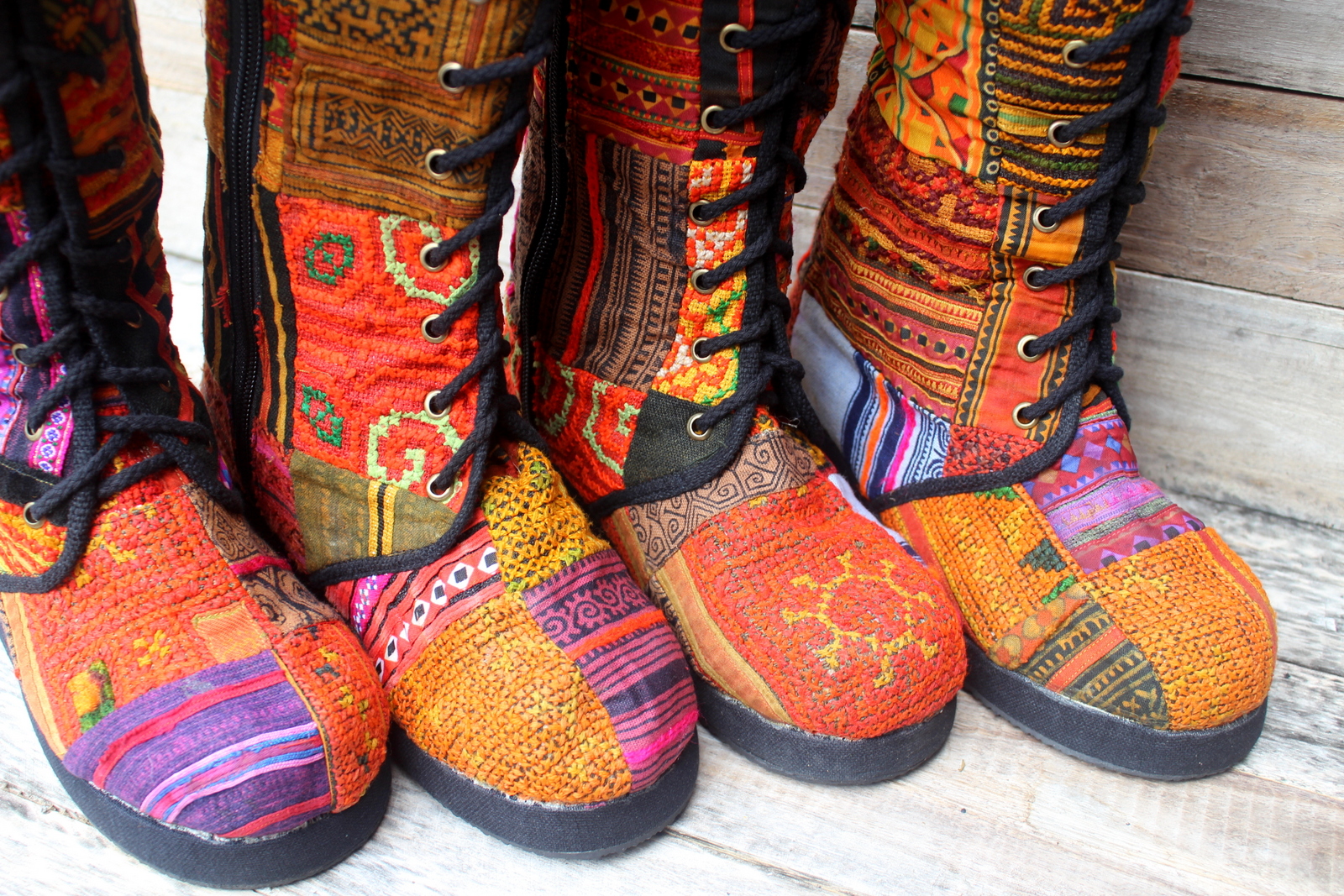What's In A Name
We have been working on our new children’s line of clothing
and footwear for many months. There can be a lot of bumps in the road when you are making a brand new line of products. We finally have enough little shoes and boots,
dresses and pants to go ahead and present our ideas to the world. Wait, we need
a name for all this adorable little stuff. We thought about using something like "Boho Babies", no we are not really making baby things and a 5 year old might just not be happy being called a baby. "Tribal Tots", hmmm, but we go up
to larger sizes that are no longer tots.
DekDoi, as soon as the words came out
of Amy’s mouth we both knew this was it.
When we travel to the villages in the mountains often we are
there in the afternoons. This is the time the children come out to play. It is such
a pleasure to watch these children and their simple methods of play. No
electronics, no fancy toys or computers to occupy their time. They run, rocks
and pebbles turn into games in the dirt. It’s simple, they are breathless with
joy as they speed up and down the hills. Mothers chatting close by with friends
while working on their latest embroidery, babies, lots of babies. It’s
simple, it’s natural, it’s slow and it is pure joy to watch. Dek Doi means mountain child, it was perfect. Young, wild, free.
So we gathered up
some friends, several cameras, a few small children with parents
in tow and headed out to the country. Thank you Charlotte for living in paradise. An old teak-wood house, mountains, a lake and lots of room for kids to run.
The children
played and the photographers shot as they… well did what
children do.
A blanket, some bubbles, a guitar played by our dear friend Thon and a great day was had by all.
Introducing DekDoi
(Mountain Child)
by Siamese Dream Design
A friendly neighbor even stopped by to see what we were up to.
A giant thank you to all of our friends who helped make this day possible. We truly love you.
Visit the Children's Shop on Siamese Dream Design to see all of the new children's styles.
Ethnic fashion for the smaller set.
Barbara

.jpg)




.jpg)



.jpg)















































